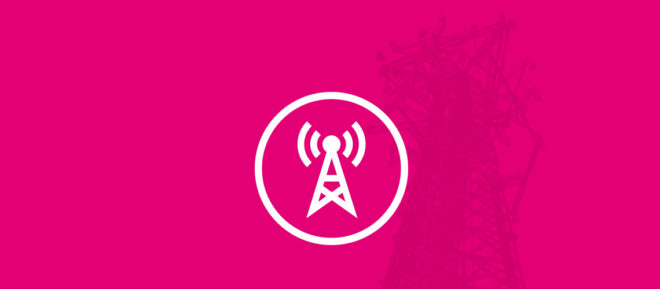
Hot on the heels of AT&T filing a complaint with the National Advertising Division (NAD) over T-Mobile’s claymation holiday video, a decision on another NAD complaint related to T-Mo has come out.
The NAD has issued a compliance report on a Verizon complaint about T-Mobile’s 4G LTE advertising, which covers three aspects: network speed, network age, and network coverage. When it comes to network speed, the NAD was concerned that the crowdsourced data referenced by T-Mobile might’ve been unfairly biased in T-Mo’s favor due to data deprioritization policies.
In its report, the NAD says that the data used by T-Mobile to make its “fastest 4G LTE network claim” doesn’t suffer from the same potential bias. T-Mobile’s new claim was based on speed tests from Q2 2017 while the NAD was concerned about results from Q1 2017, which is when Verizon customers may have first experienced data deprioritization due to Verizon’s new unlimited plan. The second quarter would not be the first time those customers experienced deprioritization, the NAD explains.
Additionally, OpenSignal reexamined speeds for T-Mobile and Verizon to exclude user-initiated tests and use only random background testing. It found that the difference in the background results and the published results were not materially different. Ookla Speed Test was used during the dat when there was no network congestion and no deprioritization, and those results also showed that T-Mobile’s network was faster.
When it comes to network age, the NAD believes that tweets from T-Mobile CEO John Legere are advertising and that his tweets about Verizon’s network “crumbling” and “declining” with images of deteriorating buildings should be discontinued. The NAD asked T-Mobile not to use such messages in the future.
Because their network is crumbling under #unlimited. Come to @TMobile! pic.twitter.com/YOT9RjcyC8
— John Legere (@JohnLegere) 31 August 2017
Finally, the NAD determined that T-Mobile’s advertising about network coverage was in line with the group’s recommendations. The NAD says that T-Mobile’s new coverage did not compare the percentage of Verizon customers that it covers and instead made coverage claims regarding specific areas (“covering all of Baltimore”) alongside a coverage map.
Verizon originally complained that T-Mobile’s advertising was based on speed test results that were slow as a result of deprioritization. Verizon took issue with T-Mobile’s claims that its network was “newer” and “faster” than Verizon’s “older” and “slower” network and that T-Mobile covered 99 percent of the area covered by Verizon.
The NAD recommended in September 2017 that T-Mobile discontinue claims that T-Mo’s network is newer and faster, that Verizon’s network is older and slower, and that T-Mobile covers 99.7 percent as many people as Verizon so that it’s clear that that stat is based on coverage population and not geographic coverage.
Verizon then told the NAD that T-Mobile was not complying with the NAD’s recommendation, but T-Mo said that it was advertising that it had the fastest 4G LTE network because it was using newer speed test data.
That all leads us to today, with the NAD saying that T-Mobile has ultimately complied with its recommendations. That’s a result that I’m sure T-Mo is glad to hear because it means that its advertising is cleared and that this particular interaction with the NAD is behind it. You can read the NAD’s full report, NAD 6117, at the link below.
Source: ASRC
